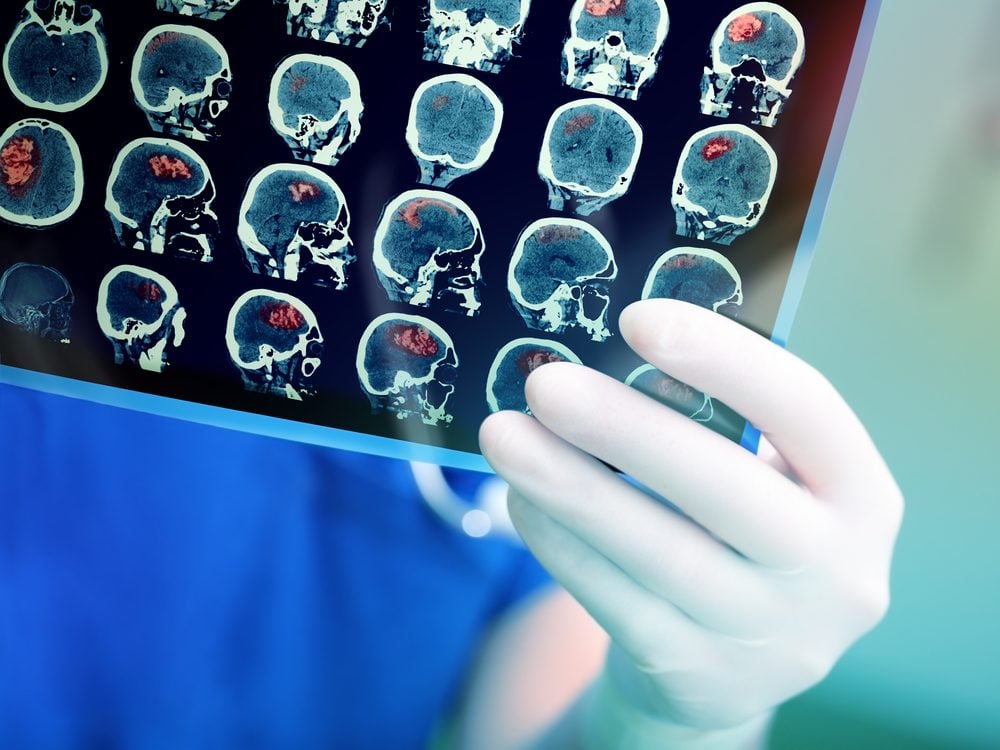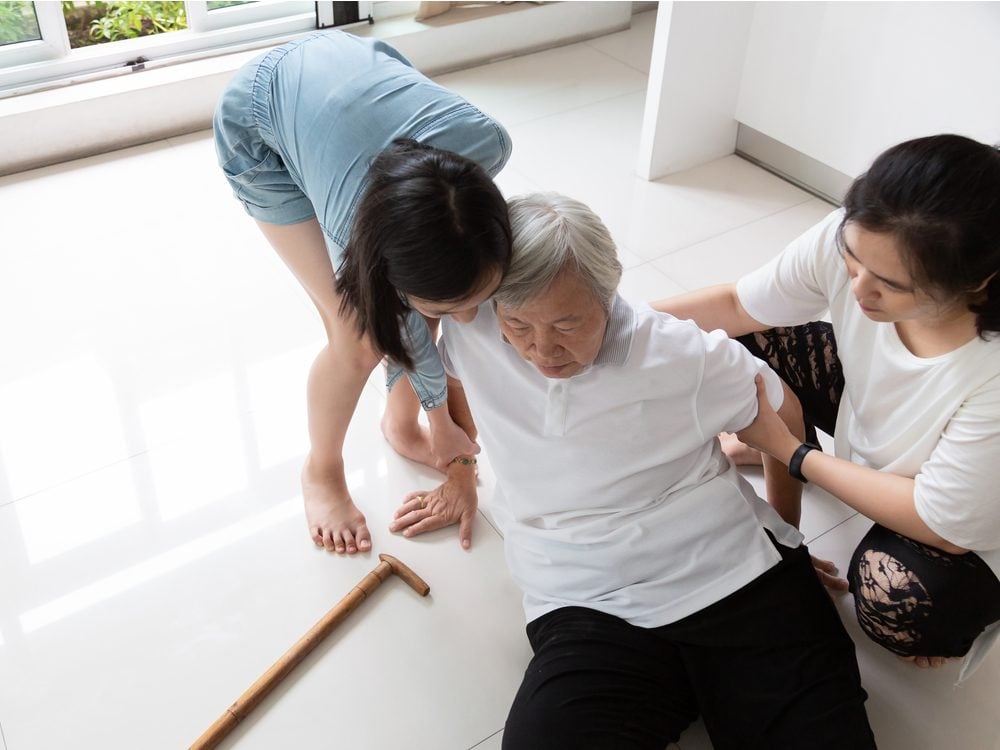
Stroke—the silent killer
In July 2015 Florence Baudouin, then 45, woke in a hospital bed in Paris. She had tubes everywhere, connecting her to blinking, beeping machines. She remembered collapsing in the street and the helicopter that arrived soon after, with rescuers who warned her not to fall asleep. And that was all. She discovered that she had no memory of how to speak. Nor did much else seem to function. “My brain wasn’t able to give orders to my body,” she says.
Florence had suffered a stroke. About one in six men, and one in five women, will have a stroke sometime in their lifetime. It is the second most common cause of death in Europe, behind only heart attack, killing approximately 433,000 people each year. It’s also the leading cause of long-term disability, according to a paper published in July, 2018 in the European Stroke Journal.

What is a stroke?
In the most common type, ischemic stroke, such as Florence suffered, blood flow is blocked by a clot in one of the arteries to the brain. These clots often form where a cholesterol-laden plaque ruptures. Ischemic strokes account for about 85 per cent of cases. Symptoms come on suddenly and dramatically when blood—and the life-giving oxygen it carries—can’t get past the plug. (Find out more facts about ischemic strokes.)
Hemorrhagic stroke, responsible for another approximately 15 per cent, is caused by a broken vessel bleeding into the brain. Stroke experts have a saying: Time is brain. Brain cells, called neurons, deprived of oxygen begin to die at an alarming rate: 1.9 million per minute. The functions those cells control switch off. A major stroke sufferer might suddenly be unable to stand, see or move one of her hands, arms or legs. Stroke typically weakens or shuts down one side of the body (opposite the side of the brain where the stroke occurs). Half the face might go slack. Speech can be slurred or impossible.
At the hospital Florence was treated with the intravenous clot-buster drug tPA (tissue plasminogen activator). The procedure, called thrombolysis, can stop a stroke in its tracks by chemically dissolving the clot, allowing blood to circulate unimpeded and limiting permanent neurological damage. When tPA was first approved in the EU in 2002, it was the biggest breakthrough in stroke treatment on the continent to date. Today, more than 100,000 Europeans per year are treated by thrombolysis.
But thrombolysis isn’t the right treatment for everyone, explains Keith Muir, Professor of Clinical Imaging at the University of Glasgow in Scotland. When it is administered within the first 90 minutes after symptoms onset, according to Professor Muir, about one person in five will get significant benefit and go home with few to no lingering symptoms. “By the next 90 minutes, it’s one in ten. If you treat in the next 90 minutes it’s one in 20. And after that it’s no effect at all.” The treatment comes with substantial risk of bleeding in the brain and if the neurons fed by the blocked artery are not salvageable because too much time has passed, the bleeding risk is too great related to potential benefit.
Even when administered immediately, thrombolysis by itself isn’t always 100 per cent effective. “When people have blood clots in the bigger arteries of the brain, closer to the main trunk, tPA most of the time doesn’t work as well,” says Dr. Raul Nogueira, professor of Neurology at Emory University School of Medicine in Atlanta, Georgia, USA.
Florence was fortunate. She woke up after the procedure still unable to speak, but tPA had stopped the stroke from further damaging her brain.
Do you know the difference between a stroke and an aneurism?

Time is of the essence after a stroke
Environmental engineer Jan Heussen, now 45, of Oppenheim, Germany, remembers the morning in late April 2016 starting out much like any other. At about 7 a.m. he went downstairs to prepare the family’s breakfast. He felt fine right up to the moment he collapsed while feeding Fellow, his Golden Retriever.
His wife, hearing a thud, raced downstairs. Shocked to see her athletic husband lying helpless on the floor, she called for an ambulance. Hospital emergency staff determined Jan had suffered an ischemic stroke and immediately performed thrombolysis.
But the tPA did not dissolve the blood clot as hoped. As precious minutes ticked by, Jan was sped by ambulance to a larger hospital that was equipped to perform a newer procedure called thrombectomy, whereby surgeons thread a tiny stent or suction device through a tube into the blocked artery. Once it arrives at the clot, it can either grab it and pull it out or suction it away.
It had now been three hours since Jan Heussen’s stroke. Surgeons first took scans of his brain to help them target the exact location of the clot then threaded a thrombectomy device through an artery to clear it, and in doing so probably saved his life.
Until very recently, experts believed that the time window for performing a thrombectomy was almost as narrow as for tPA—an absolute maximum of six hours. And that’s usually true. But recent research, including a study published in January 2018, conducted by Professor Nogueira and others, shows that in 30 per cent of major stroke victims, enough blood can bypass the blockage through smaller blood vessels nearby to slow down the destruction. And that can expand the window for treatment. Doctors determine who is benefitting from such “collateral circulation” by using specialized brain scans. Surgeons can sometimes perform a thrombectomy up to 24 hours after stroke’s onset.
Professor Nogueira cautions, however, that “[Collateral circulation] is buying you time. But the brain is still dying.” Someone who still has a chance of recovery at six hours after a stroke’s onset might no longer have that chance at eight hours.
Jan woke after his thrombectomy profoundly relieved to discover he was already able to move his right arm and leg a little, which he hadn’t been able to do after collapsing. Within hours, however, his leg and arm again would not move. They were completely paralyzed.
He had suffered a second stroke.A person who has one stroke—especially if initial risk factors remain the same—is at increased risk for another. That risk remains high even ten years after the first stroke.
After performing a second thrombectomy, stabilizing Jan and placing him in a coma for 48 hours to help him heal, doctors found what had caused his strokes on an echocardiogram: he had a hole in the upper chambers of his heart—probably present since birth. Clots formed as a result, travelled through an artery to his brain, and blocked the blood flow.
Although more hospitals are equipped for thrombolysis with tPA than for the newer mechanical thrombectomy methods, Dr. Danilo Toni, Director of the Emergency Department Stroke Unit at Hospital Policlinico in Rome, Italy, says it shouldn’t be an either/or choice: “Randomized controlled trials have demonstrated the efficacy of thrombectomy on top of IV thrombolysis.” He says that recent guidelines recommend using both, except in cases where administering the clot-busting drug might be too risky.
One common medication that neither Jan nor Florence was offered, fluoxetine (Prozac), can significantly improve motor skills after stroke. It appears to do this by promoting connections between damaged neurons and intact ones.
Read the incredible true story of how one woman’s nagging headache turned out to be a stroke.

Life after a stroke
Doctors had stopped the strokes from doing further damage to both Jan and Florence’s brains, but they each faced daunting disabilities.
“When I woke up I didn’t know how to talk. I couldn’t read or write. I couldn’t even eat,” says Florence. “I was like a child who needs to learn everything.” But, despite that, “I felt determined that I would one day fully recover,” she says today. “That was my aim. That was my hope.”
As life altering as her symptoms were, they didn’t by themselves predict much about the likelihood that Florence would recover. Friedhelm Hummel, Associate Professor of Clinical Neuroscience at the University of Geneva Medical School in Switzerland, says that stroke survivors’ lingering symptoms might outwardly look similar, but there can be great differences from one person to the next in the degree, area and type of damage. These differences can determine whether a person goes back to a normal life.
After a month in hospital, Florence willed herself to get up from her wheelchair. She soon advanced to using crutches and regained limited use of her right hand. Her progress accelerated once she was moved to a rehabilitation centre in Chatillon. There she spent hours every day working with a speech therapist, neuropsychologist and physiotherapist in an intensive multifaceted program.
“When I was shown an image, I was unable to say the corresponding word and I pronounced another one,” she recalls. “Little by little, I began to understand what was expected from me, but just orally. It took me almost a year to be able to talk and read. For writing, it took much more time.”
Florence is still in speech therapy three years after her stroke. Because her right hand feels heavy, she was unable to continue her career as a hairdresser and turned over management of her salon to one of her employees. Now about 75 per cent recovered, she is determined to continue her progress.
Jan’s physiotherapy began while he was still in hospital, a week after his second stroke. “I could not raise my arm at all in the beginning,” he says. But, with the help of his therapist, he kept trying. “After the second week, very slowly, I could move it a little bit.”
At that point, he was transferred for five weeks to a rehabilitation clinic. Unlike Florence, he understood everything he read. But trying to form even the most rudimentary verbal response was hard. His speech therapy began with re-learning how to say a few words, and then moved on to simple phrases. It was frustratingly difficult, he says, “to set words in the right order.”
But Jan had a strong will to practise and regain what he’d lost, and gives as an example of one his first attempts to speak to a supermarket assistant, after leaving the rehabilitation centre. “I ordered my meat and cold cuts although I was stuttering and my speech was almost not understandable. But finally I got my order right.”
And he continues to go to physiotherapy and speech therapy, but says that everyday life is his best therapy. In his leisure time, he enjoys cycling and jogging and getting out into nature with his dog Fellow. Though he hasn’t yet got full use of his right hand and still has to write with his left, “I’m trying to do everything first with my right hand and arm.”

The brain can rewire after a stroke
Although stroke is the leading cause of disability worldwide, it’s not clear how many more people who are presumed incapable of further recovery could be helped with the right therapy—or really any therapy, since for many, no attempts at rehabilitation are made beyond the first few weeks. Yet a 2014 paper in the journal Topics in Stroke Rehabilitation says that there’s impressive evidence to show that more optimism is warranted. Many people can and do recover function long after stroke.
The most dramatic evidence of this was documented in a case study of a man from Toronto, Canada. After an ischemic stroke in 1979 and for the next 22 years, his left hand was completely non-functional. But a year after he began swimming in 2001 it began to show signs of life. Spurred by this, he began intensive physical therapy. Within two more years he was able to pick up coins with his previously paralyzed hand. When doctors performed an MRI, they found the reason why: his brain had begun to “rewire” itself, bypassing tissue destroyed by the stroke to make new connections.
The ability to reroute around long-standing damage is known as brain plasticity. But in the early stages after a stroke, affected neurons are sometimes damaged but not destroyed. If neurons are able to recover, function may return sooner and more fully.
“If somebody shows even a flicker of movement in a completely flaccid limb in the first 30 days, I view it as a very promising sign,” says Dr. Heidi Fusco, Assistant Professor of Rehab Medicine at NYU Langone’s Rusk Rehabilitation Centre in New York. “I have patients who are still recovering two, three years after their ischemic stroke, and they continue to improve.” It’s time to think more optimistically about stroke recovery, and give more people a chance.
Professor Hummel envisions a future where that can more readily occur. “We have to get away from one-suits-all therapy ideas to personalized precision therapy,” he says. His research focuses on discovering “bio-markers” that could one day help doctors know in advance which therapies will work best for which patients, and even which parts of the undamaged brain should be stimulated to encourage new neurons to take on the functions of sectors that stroke destroyed.
“What’s most important to recognize,” says Professor Muir, is that “stroke is a treatable disease. We have things that are effective, and simple stuff matters as much as complicated stuff.”
Next, find out which stroke risk factors you can—and can’t—control.